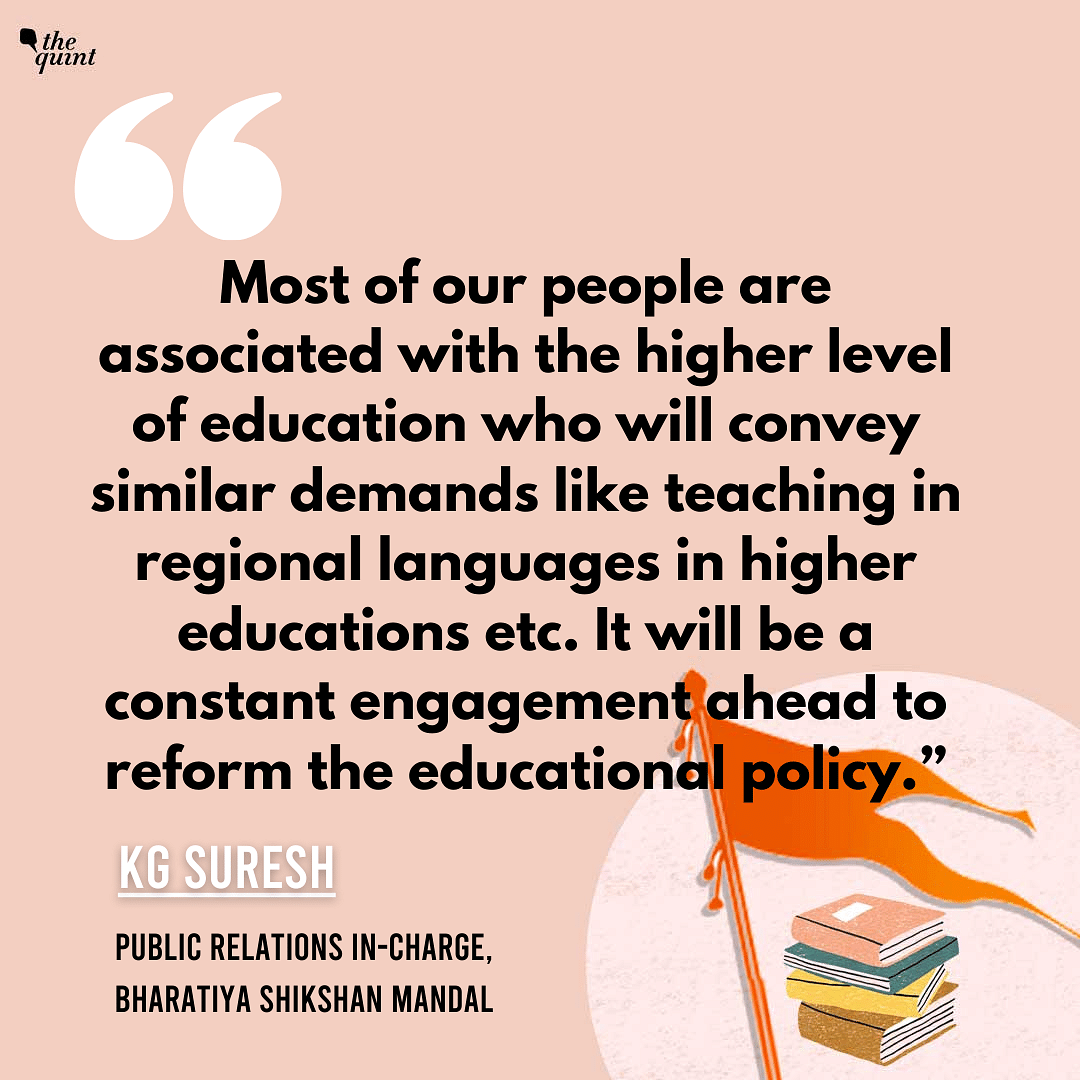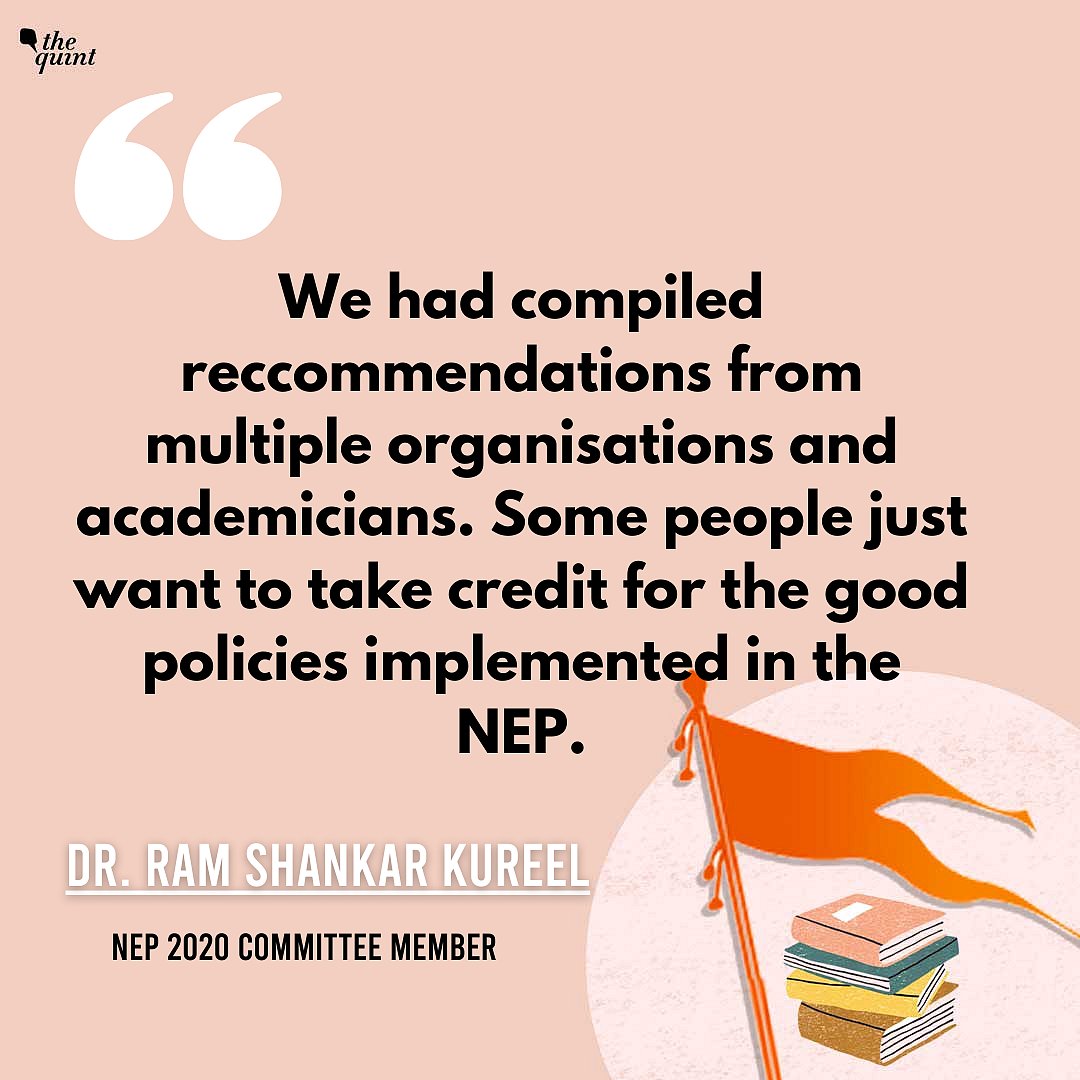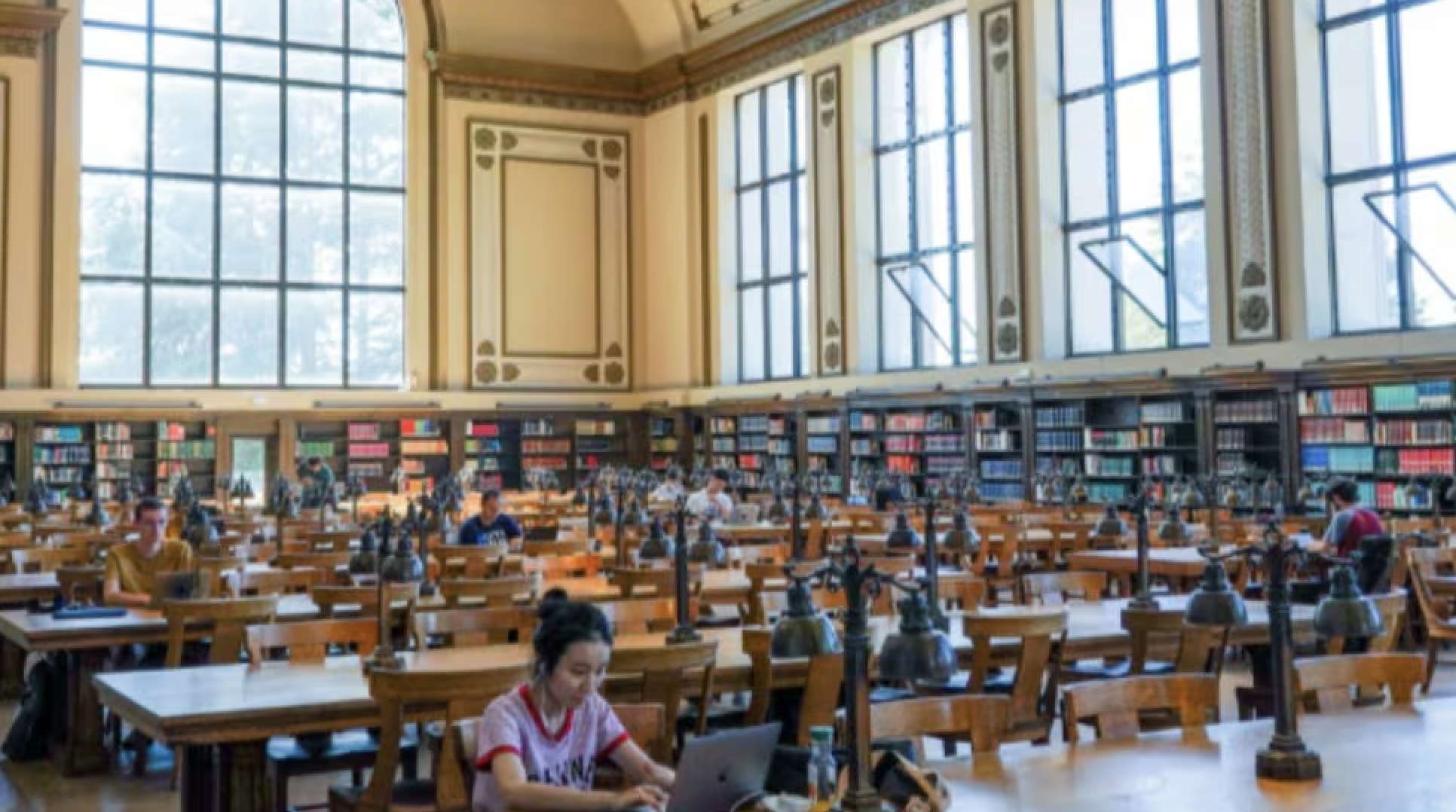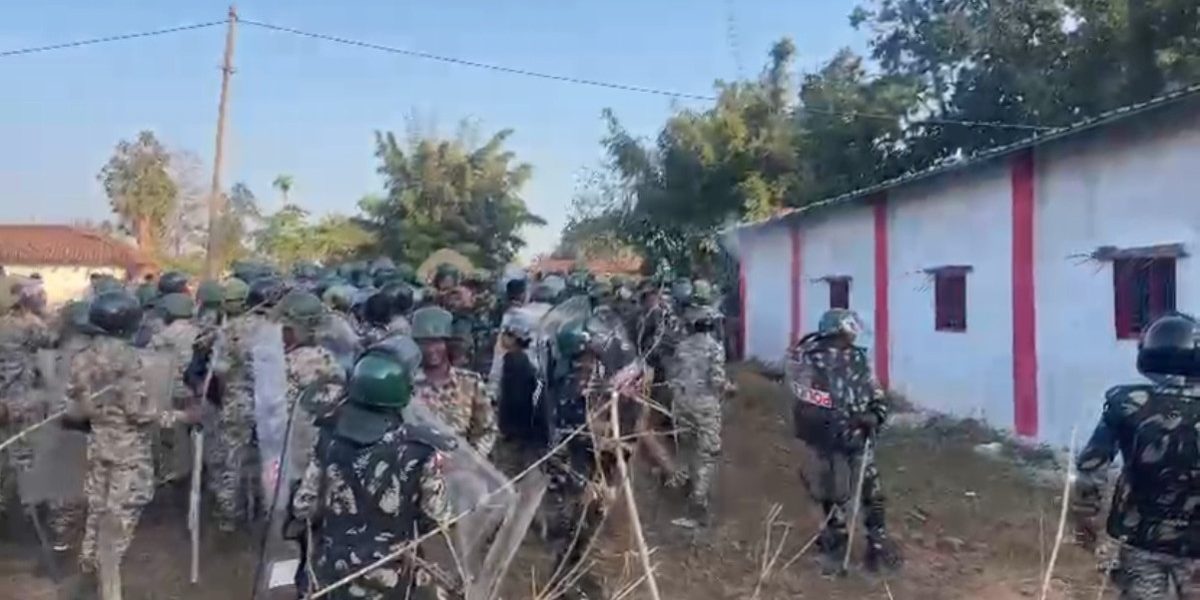
By ASMITA NANDY
How much influence did the RSS, the BJP’s ideological fountainhead, have on the New Education Policy 2020? What were the demands made by several Hindutva outfits and how much of those demands have been incorporated in the final policy? Let’s break it down.
Changes in NEP 2020 That Hindutva Outfits Are Happy About
India got a new education policy after 34 years and right-wing organisations workings towards educational reforms are jubilant because they feel they have had a major say in the final policy. They claim that most of their suggestions have been incorporated in the final version.
Welcoming the NEP 2020, KG Suresh, the spokesperson of one of the Hindutva outfits ,Bharatiya Shikshan Mandal (BSM) said, “60-70 percent of our demands have been accommodated in some form or the other.”
Another right-wing outfit, which claims to be autonomous but was founded by senior RSS pracharak Dinanath Batra, Shiksha Sanskriti Utthan Nyas (SSUN) had also pushed for their recommendations to be implemented in the final policy.
Here are the key proposals made by the Sangh and its affiliated outfits that have found a place in the final education policy:
- Changing name from Ministry of Human Resource and Development (MHRD) to Ministry of Education – The Ministry of Education was renamed as the Ministry of Human Resource and Development in the Rajiv Gandhi era in 1985. BSM’s KG Suresh said we had suggested the word “culture” to be added since that was the first name of the ministry after Independence. Nonetheless, we are happy with the name change.”
- Education in mother tongue till Class 5 – The Hindutva outfits had demanded that education in a child’s ‘mother tongue’ be made mandatory in higher education too, but the final policy approved by the Cabinet says, “Wherever possible, the medium of instruction until at least Grade 5, but preferably till Grade 8 and beyond, will be the home language/mother tongue/local language/regional language.”
- Three-language policy – Unlike demands by the right-wing organisationa, the three-language formula does not make it mandatory for Hindi to be taught in all States. Although the 2019 draft had made it compulsory to keep Hindi and English as two of the language subjects, the final policy says, “The three languages learned by children will be the choices of States, regions, and of course the students themselves, so long as at least two of the three languages are native to India. ”
- Holistic development of the child – Flexibility in education system and integration of vocational education with school education have been pet themes of the RSS and its sister outfits.
- National Research Foundation – KG Suresh said, “It is important to focus on research to progress as a country.” According to the NEP, establishment of a National Research Foundation is essential “to fund outstanding peer-reviewed research and to actively seed research in universities and colleges.”
Meetings, Seminars, Recommendation Reports: How Hindutva Outfits Made it to the Policy Table
Several meetings with BJP top guns, conclaves, feedback seminars and detailed reports listing out recommendations – that’s how the RSS and its several sister bodies worked together at the policy drafting table.
- In 2016, the then-HRD Minister Prakash Javadekar had held closed-door meetings with several RSS-affiliated bodies including Vidya Bharati, Akhil Bharatiya Vidyarthi Parishad, Rashtriya Shaikshik Mahasangh, Bharatiya Shikshan Mandal, Sanskrit Bharati, Shiksha Sanskriti Utthan Nyas (SSUN) to understand the Sangh’s perspective on the education policy.
- Shiksha Sanskriti Utthan Nyas (SSUN), the outfit founded by Dinanath Batra, had held 40 large seminars and meetings with 6,000 academicians around the country to seek feedback after the first draft of the education policy, Kothari said.
- In 2018, PM Narendra Modi and then-HRD Minister Prakash Javadekar attended a conference conducted by a sister-concern of the RSS-affiliated Bharatiya Shikshan Mandal, the objective of which was “to deliberate on the challenges facing the Indian education system and to work out a plan for a paradigm shift both in terms of achieving academic outcomes and also in the regulation of education.”
- Changing the name of the ministry was one of the biggest topics discussed at this conference. KG Suresh said, “We had unanimously demanded that the name of the Ministry should be changed. We see the name change as a reflection of our demands.” A similar conclave was held again in July 2019.
- In 2019, SSUN organised a conclave called ‘Gyan Utsav 2076’, which was attended by RSS chief Mohan Bhagwat, current Education Minister Ramesh Pokhriyal and Baba Ramdev. At the conclave, SSUN had floated several suggestions for the education policy.
- The Sangh affiliates had submitted their suggestions to two key NEP drafting committees – the Subramanium committee and another headed by K Kasturirangan.
Did Govt Walk a Tightrope on the RSS-Affiliated Outfits’ Demands?
Given that the government has not implemented all the suggestions given by the Hindutva outfits or has found an alternative way to accommodate them, are the organisations satisfied with the final policy?
Speaking to The Quint, General Secretary of SSUN and Batra’s successor, Atul Kothari said:

Speaking to The Quint, KG Suresh said:

The final policy was drafted and submitted by a committee headed by K Kasturirangan.
One of the committee members, Dr Ram Shankar Kureel, said, “The committee had sought recommendations from various groups and people, collected feedback from open forums, personally consulted many organisations including educationists, heads of institutions, religious institutions running their universities and colleges. Earlier, multiple recommendations were also collected by the Subramanium committee.”

He pushed back against claims by particular outfits that their recommendations had been accepted, saying: “Many organisations are trying to claim credit for the good things that have been implemented in the education policy.”
Will Hindutva Outfits Play a Role in Reshaping Curriculum?
The new education policy states that the “curriculum content will be reduced in each subject to its core essentials.”
It further says, “All curriculum and pedagogy, from the foundational stage onwards, will be redesigned to be strongly rooted in the Indian and local context and ethos in terms of culture, traditions, heritage, customs, language, philosophy, geography, ancient and contemporary knowledge, societal and scientific needs, indigenous and traditional ways of learning etc. – in order to ensure that education is maximally relatable, relevant, interesting, and effective for our students.” (emphasis added)
Welcoming the “Indianisation” approach undertaken by the NEP, KG Suresh said, “This brings out the ethos of our proposals.” When asked if his organisation has been approached to be a part of the several subject-committees, Suresh said, “The policy is in its niche stage. If approached, we shall certainly suggest names.”
In its proposals to the Kasturirangan committee, BSM had suggested a section named “Curriculum for Idea of Bharat”. Under the section, it said,
SSUN, during its Gyan Utsav conclave in 2019, had also suggested including Vedic maths and tenets of Indian traditional knowledge systems in the school curriculum.
This story first appeared on thequint.com





